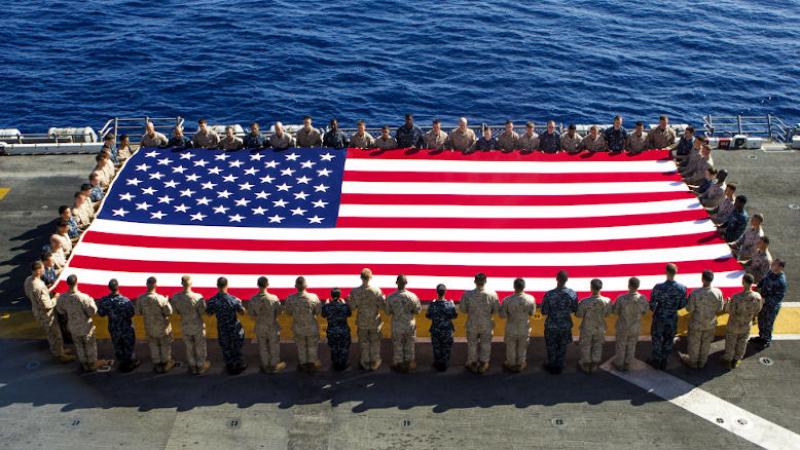
When two new States were admitted to the Union (Kentucky & Vermont), a resolution was adopted in January of 1794, expanding the flag to 15 stars and 15 stripes. This flag was the official flag of our country from 1795 to 1818, and was prominent in many historic events. It inspired Francis Scott Key to write The Star Spangled Banner during the bombardment of Fort McHenry; it was the first flag to be flown over a fortress of the Old World when American Marine and Naval forces raised it above the pirate stronghold in Tripoli on April 27, 1805, it was ensign of American forces in the Battle of Lake Erie in September of 1813, and it was flown by General Jackson in New Orleans in January of 1815.
However, realizing that the flag would become unwieldy with a stripe for each new State, Captain Samuel C. Reid, USN, suggested to Congress that the stripes remain 13 in number to represent the 13 colonies, and that a star be added to the blue field for each new State coming into the Union.
Accordingly, on April 4, 1818, President Monroe accepted a bill requiring that the flag of the US have a union of 20 stars, white on a blue field, and that upon admission of each new State into the Union one star be added to the union of the flag on the 4th of July following its date of admission. The 13 alternating red and white stripes would remain unchanged. This act succeeded in prescribing the basic design of the flag, while assuring that the growth of the Nation would be properly symbolized.
Eventually, the growth of the country resulted in a flag with 48 stars upon the admission of Arizona and New Mexico in 1912. Alaska added a 49th in 1959, and Hawaii a 50th stars in 1960. With the 50 star flag came a new design and arrangement of the stars in the union, a requirement met by President Eisenhower in Executive Order No. 10834, issued August 21, 1959. To conform to this, a national banner with 50 stars became the official flag of the United States. The flag was raised for the first time at 12:01 am on July 4, 1960, at Fort McHenry National Monument in Baltimore, Maryland.
Traditionally a symbol of liberty, the American Flag has carried the message of freedom to many parts of the world. Sometimes the same flag that was flying at a crucial moment in our history has been flown again in another place to symbolize continuity in our struggles for the cause of liberty.
One of the most memorable is the flag that flew over the Capital in Washington on December 7, 1941, when Pearly Harbor was attacked. This same flag was raised again on December 8, when war was declared on Japan and 3 days later at the time of the declaration of war against Germany and Italy.
President Roosevelt called it the Flag of Liberation and carried it with him to the Casablanca Conference and on other historic occasions. It flew from the mast of the USS Missouri during the formal Japanese surrender on September 2, 1945.
Published U.S. Legacies July 2003
- Log in to post comments
